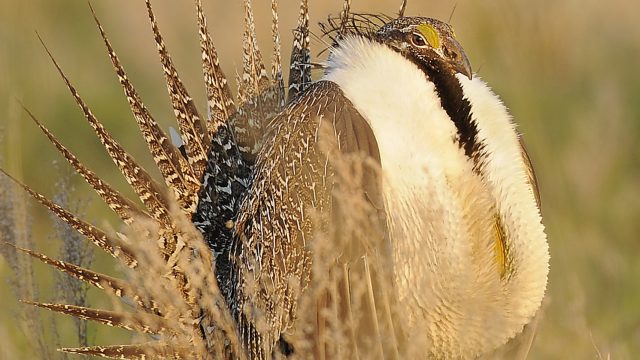Doug Leier: North Dakota Sage Grouse Population Struggles

North Dakota won’t have a sage grouse hunting season in 2014. That news probably doesn’t surprise anyone who pays attention to the state’s outdoor world.
Sage grouse are North Dakota’s largest native upland game bird, found only in the extreme southwestern part of the state, primarily in Bowman and Slope counties. There hasn’t been a season for several years, and realistically, there’s not much optimism among state wildlife managers that we’ll see a season any time soon.
The sage grouse survey numbers from 2014 didn’t do anything to raise hopes. Aaron Robinson, North Dakota Game and Fish Department upland game bird biologist, said biologists counted a record low 31 males on six active strutting grounds this spring, compared to 50 males on 11 active leks last year.
“South Dakota and eastern Montana witnessed a similar decline this year,” Robinson said. “The last time we saw such a drastic decline in the region was because of West Nile virus in 2007-08. We may have had another outbreak in the region, but at this point it is only speculation.”
Sage grouse are a long-lived species with low reproductive output, which makes population recovery slow. Currently, Robinson said, natural reproduction cannot keep up with natural mortality.
“We may also have reached a genetic bottle neck in terms of reproduction potential that may be a factor in the struggling population,” he added. “Also, there are only six active leks for roughly 460,000 acres of core sage grouse area. The densities of active leks may be limiting hens from finding males to breed.”
While bird numbers are extremely low, those remaining could have the potential for a successful nesting season this year due, to abundant residual grass cover brought about by last summer’s rainfall. “We have learned from recent research in North Dakota that sage grouse rely heavily on residual grass cover for concealment during nesting season,” Robinson said. “Without grass cover, mortality of females on nests increases and the probability that the nest will be depredated also increases. The outlook for a favorable hatch this year looks optimistic for the limited number of birds we have in the state.”
Sage grouse management in North Dakota follows a specific plan developed by a diverse group of participants. Last year the Department developed a draft revision of a 2005 plan that addresses conservation of sage grouse within the state. Game and Fish will finalize that plan in the near future, and it will be on the Game and Fish website at gf.nd.gov ; or by mail by contacting Game and Fish at (701) 328-6300.
Game and Fish Director Terry Steinwand said the sage grouse plan was updated to address potential listing by the U.S. Fish and Wildlife Service under the Endangered Species Act. “North Dakota is one of 11 Western states that has a sage grouse population,” Steinwand said, “and all states are developing or revising conservation plans to address management concerns throughout the sage grouse range.”
The plan will lay out a framework that allows for local and public input that will help with conservation actions. The long-term goal is enhancement of sage grouse habitats in North Dakota, often through private-public partnerships, that will again support a healthy self-sustaining sage grouse population.
While the numbers are limited, the interest in the future of sage grouse in North Dakota and the rest of the west is actually growing.
For more information, visit the Sage Grouse Initiative website at www.sagegrouseinitiative.com.




